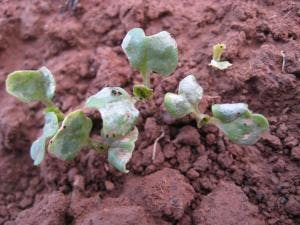
Case study: Resistant Redlegged earth mite in pastures
12 November 2023
Adrian is an agronomist who manages perennial grass based pasture systems across the Fleurieu Peninsula in South Australia. He has been managing populations of redlegged earth mite (RLEM) with insecticide resistance since 2017.
Resistance issues were suspected when he was not getting adequate levels of control after using synthetic pyrethroids (SPs) and organophosphates (OPs) for RLEM management. Testing done by Cesar Australia confirmed that paddocks have mite populations resistant to SPs or resistant to both SPs and OPs.
Upon suspecting resistance, he was more mindful of various insecticide resistance management approaches.
“I don’t like resistance, it scares me…what do you do if you have no selective chemical control measures?”
The initial actions included being more vigilant around rotating chemical mode of action (MOA) groups and ensuring Timerite was implemented correctly and where necessary.
“We tried to rotate chemicals a bit better, and to not be as slap-dash”
Adrian is now very conscious about avoiding unnecessary sprays.
“We have backed off completely and don’t use insecticides on established pastures unless totally necessary.”
In 2017, SP resistance was detected in one of the paddocks. Encouragingly, when the paddock was retested in 2022, after many years without an SP application, the percentage of SP resistance had significantly dropped.
In the pasture systems that Adrian is working with, there is a focus on rotational grazing every 4-6 weeks to bring pasture levels down and avoid creating an environment with lots of cover to allow for RLEM to breed more easily.
Another target tool that Adrian is using in the perennial systems is spring sowing.
“Because RLEM are coming towards the end of their life cycle you only have to ‘battle’ mites for a short period of time whilst seedlings become established, compared to autumn sowing where continual hatching and egg laying is happening. This also reduces the need to spray the following autumn because it is a permanent pasture…it can look after itself and can handle some mite pressure.”
Adrian acknowledges that resistance is something that needs to be constantly managed.
“Resistance is still there – and some years are different to others.”
This was evident in 2023 when there was an early start to the growing season. Getting the pastures into the ground early meant better control of redlegged earth mite, as he was able to get onto things a lot earlier before the cold and wet weather started.
He has found that timing is crucial in terms of best management of RLEM, particularly during the autumn. Being on top of the initial hatching event and being aware of subsequent hatchings has been important for them to avoid being in the cycle of having to spray a paddock multiple times across the season.
